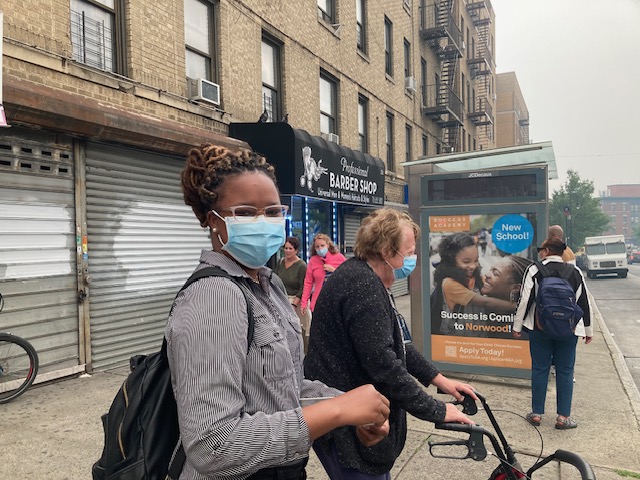
Photo by Síle Moloney
The Mayor’s Office of Community Affairs provided New Yorkers with an update on Thursday on the unprecedented event the city is facing as a result of smoke coming from Canadian wildfires. At 5 p.m. on Wednesday, June 8, the Air Quality Index hit 484, meaning “hazardous” the highest level for health concern on the index level, City officials said, adding that there was potential for conditions to significantly improve on Thursday.
“We are encouraging New Yorkers to stay home and indoors today, whenever possible,” a City representative said on Thursday. “All New Yorkers should limit outdoor activity to the greatest extent possible. City services will continue to be available for New Yorkers today and we will continue to serve this city, but we will not be conducting outdoor events.”
They said public schools are closed on Thursday, as are beaches. Staten Island Ferries are operating on a fog schedule. They also said those traveling on East River Bridges should drive at the posted speed limit.
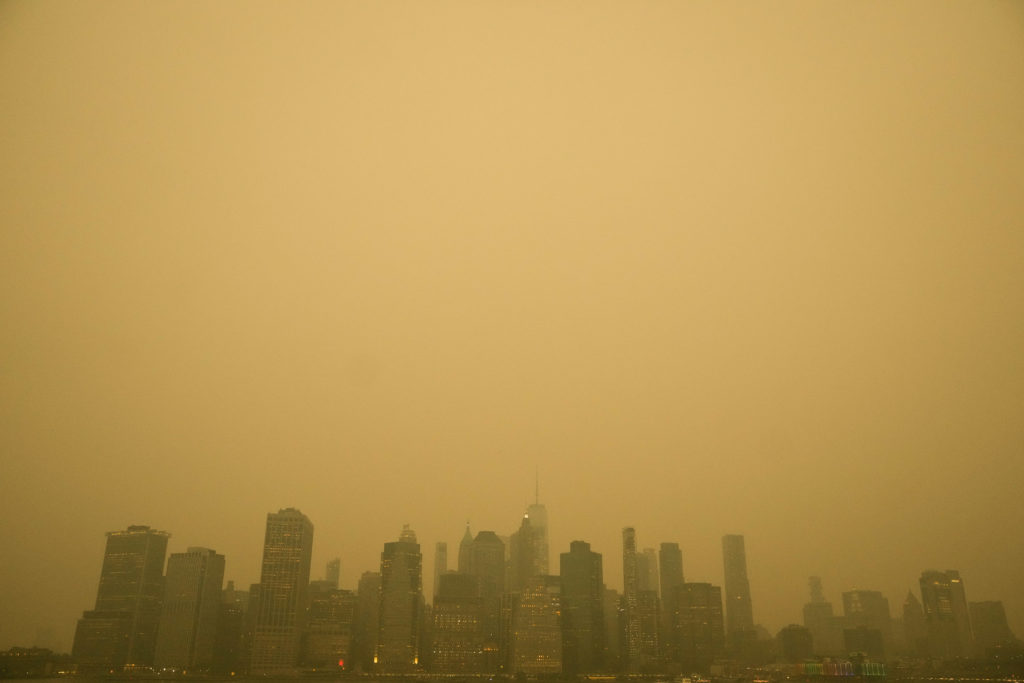
Photo courtesy of Michael Appleton/Mayoral Photography Office
“We want to reiterate what was said by the mayor yesterday: New Yorkers should stay inside, close windows and doors, and use air purifiers if you have them,” City officials said. “If you are an older adult or have heart or breathing problems and need to be outside, wear a high-quality mask such as a KN95.”
They recommended to check the air quality forecast from local media outlets, the National Weather Service, or other weather and air-quality apps that you can access on the go. They added that this represented climate change in action, and residents must continue to draw down emissions, improve air quality, and build resiliency.
“Our city is strong and resilient,” they said. “We have faced crises before, and we will get through this together. Stay indoors, stay safe and mask up if you are outside.”
On Thursday, June 8, from 8 a.m., Bronxites can each receive two masks from the following locations:
NYPD
All NYPD Precincts
Find Your Precinct and Sector – NYPD
FDNY
FDNY Division 6 – 720 Melrose Avenue
FDNY Division 7 – 2417 Webster Avenue
Tremont Neighborhood Health Action Center – 1826 Arthur Avenue

Photo courtesy of AccuWeather
New York State Department of Environmental Conservation (DEC) Commissioner Basil Seggos and State Department of Health (DOH) Commissioner Dr. James McDonald later issued an Air Quality Health Advisory for the Long Island, New York City Metro, and Western New York regions for Friday, June 9, 2023. The pollutant of concern is Fine Particulate Matter.
They said the advisory will be in effect from 12 a.m. through 11:59 p.m. on Friday, June 9. “The air quality is forecasted to reach ‘Unhealthy for Sensitive Groups’ Air Quality Index levels on Friday in the Long Island, New York City Metro, and Western NY regions,” officials said.
“DEC and DOH issue Air Quality Health Advisories when DEC meteorologists predict levels of pollution, either ozone or fine particulate matter are expected to exceed an Air Quality Index (AQI) value of 100,” they added. “The AQI was created as an easy way to correlate levels of different pollutants to one scale, with a higher AQI value indicating a greater health concern.”
As reported, on Tuesday night, New York City Mayor Eric Adams addressed the deteriorating air quality across the five boroughs with the Air Quality Index hitting 218 at 10 p.m. on Tuesday in parts of New York City, according to the U.S. Environmental Protection Agency (EPA).
“Smoke from wildfires in Canada began to impact New York City’s air quality today, and conditions this evening have worsened with additional smoke and haze moving into the region,” Adams said. “Our team is coordinating with the health department, environmental protection (EPA), emergency management (EMS), the NYPD, the FDNY, the department of education, the department of consumer and worker protection, and numerous additional agencies across the city to gather the right information for New Yorkers as quickly as possible.”
The mayor continued, “At this point, the New York State Department of Environmental Conservation has issued an Air Quality Health Advisory for all five boroughs. While conditions are anticipated to temporarily improve later tonight through tomorrow morning, they are expected to deteriorate further tomorrow afternoon and evening.”

Chart courtesy of U.S. Environmental Protection Agency
Adams added on Tuesday, “Currently, we are taking precautions out of an abundance of caution to protect New Yorkers’ health until we are able to get a better sense of future air quality reports. We recommend all New Yorkers limit outdoor activity to the greatest extent possible. Those with preexisting respiratory problems, like heart or breathing problems, as well as children and older adults may be especially sensitive and should stay indoors at this time.”
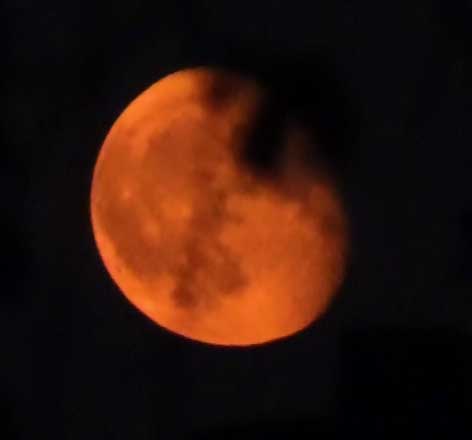
Photo by David Greene
To check the air quality locally across the City, residents can click here to view a citywide, interactive map.
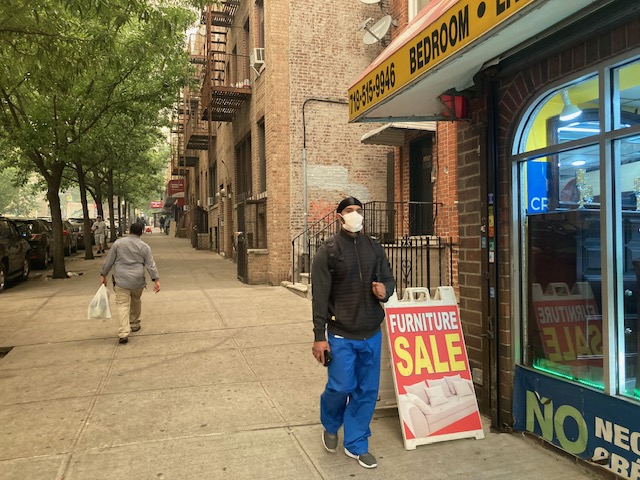
Photo by Síle Moloney
City officials said the Adams administration recommends the following steps to limit health risks as a result of the reduced air quality:
- All New Yorkers should limit outdoor activity and stay inside when possible. People with heart or breathing problems and children and older adults may be especially sensitive and should avoid outdoor activities during this time.
- If you are an older adult or have heart or breathing problems and need to be outside, wear a high-quality mask (e.g. N95 or KN95).
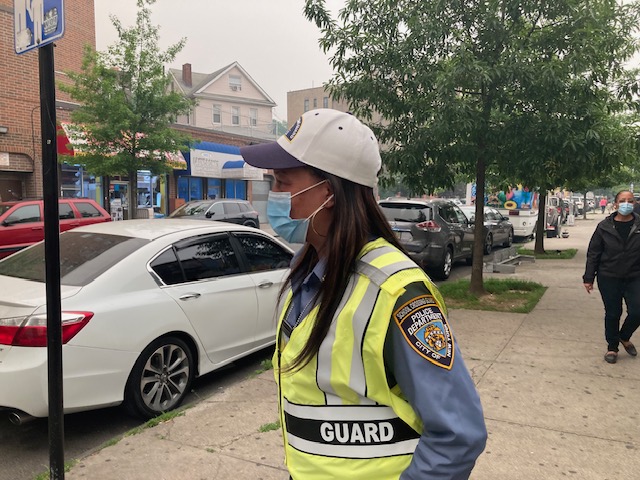
Photo by Síle Moloney
They said additional recommendations from the EPA can be found online here.
Under New York City’s Paid Safe and Sick Leave Law, covered employees have the right to use safe and sick leave for the care and treatment of themselves or a family member. Employers and employees can visit New York City Department of Consumer and Worker Protection’s website or call 311 for more information about the law.
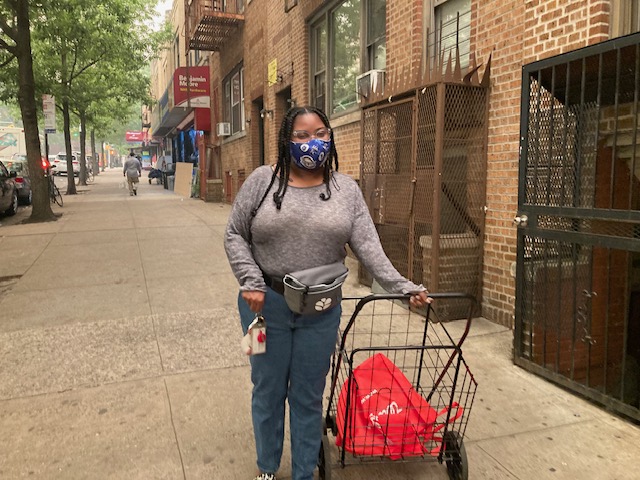
Photo by Síle Moloney
A toll-free air quality hotline has been established so New York residents can stay informed on the air quality situation. The toll-free number is 1-800-535-1345.
State officials said DEC and DOH issue Air Quality Health Advisories when DEC meteorologists predict levels of pollution, either ozone or fine particulate matter are expected to exceed an Air Quality Index (AQI) value of 100. The AQI was created as an easy way to correlate levels of different pollutants to one scale, with a higher AQI value indicating a greater health concern.
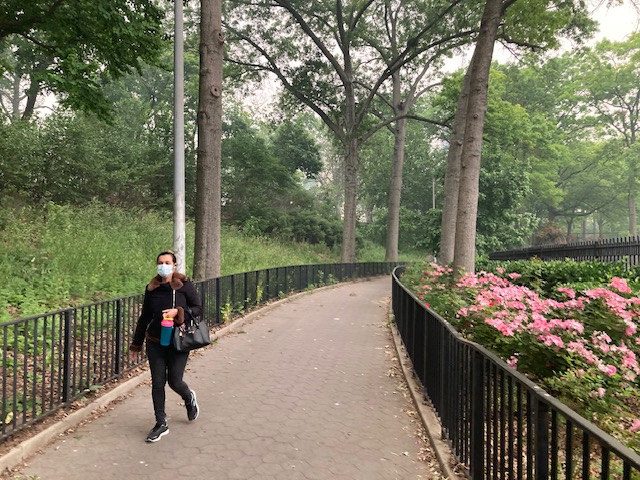
Photo by Síle Moloney
Fine particulate matter consists of tiny solid particles or liquid droplets in the air that are 2.5 microns or less in diameter. PM 2.5 can be made of many different types of particles and often come from processes that involve combustion (e.g. vehicle exhaust, power plants, and fires) and from chemical reactions in the atmosphere.
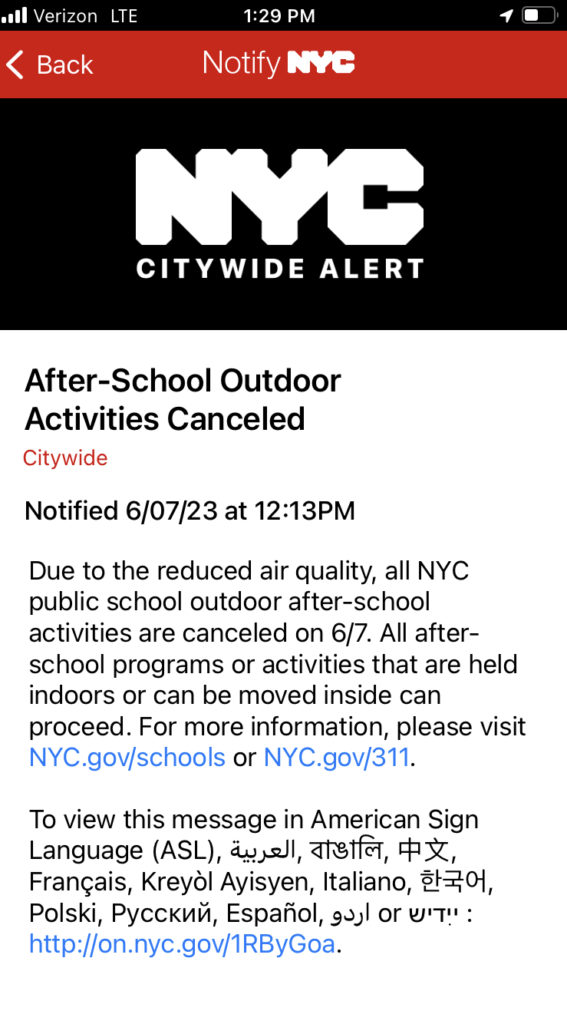
Screenshot courtesy of NYC Citywide Alert
Exposure can cause short-term health effects such as irritation to the eyes, nose, and throat, coughing, sneezing, runny nose, and shortness of breath. Exposure to elevated levels of fine particulate matter can also worsen medical conditions such as asthma and heart disease. People with heart or breathing problems, and children and the elderly may be particularly sensitive to PM 2.5.
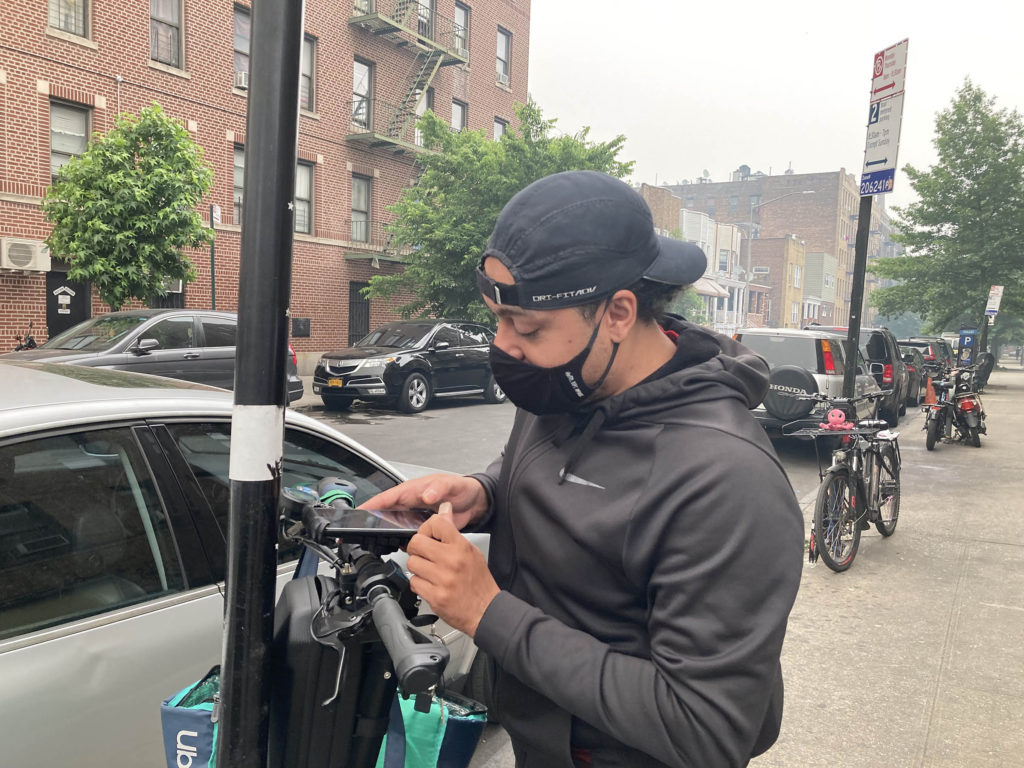
Photo by Síle Moloney
When outdoor levels are elevated, going indoors may reduce exposure. If there are significant indoor sources of PM 2.5 (tobacco, candle or incense smoke, or fumes from cooking) levels inside may not be lower than outside. Some ways to reduce exposure are to minimize outdoor and indoor sources and avoid strenuous activities in areas where fine particle concentrations are high.

Image courtesy of AccuWeather
New Yorkers also are urged to take the following energy saving and pollution-reducing steps:
- use mass transit instead of driving, as automobile emissions account for about 60 percent of pollution in our cities. During the current COVID-19 pandemic, people are strongly advised to carpool only with members of their households;
- conserve fuel and reduce exhaust emissions by combining necessary motor vehicle trips;
- turn off all lights and electrical appliances in unoccupied areas;
- use fans to circulate air. If air conditioning is necessary, set thermostats at 78 degrees;
- close the blinds and shades to limit heat build-up and to preserve cooled air;
- limit use of household appliances. If necessary, run the appliances at off-peak (after 7 p.m.) hours. These would include dishwashers, dryers, pool pumps and water heaters;
- set refrigerators and freezers at more efficient temperatures;
- purchase and install energy efficient lighting and appliances with the Energy Star label; and
- reduce or eliminate outdoor burning and attempt to minimize indoor sources of PM 2.5 such as smoking.
Additional information on ozone and PM 2.5 is available on DEC’s website and on DOH’s website.
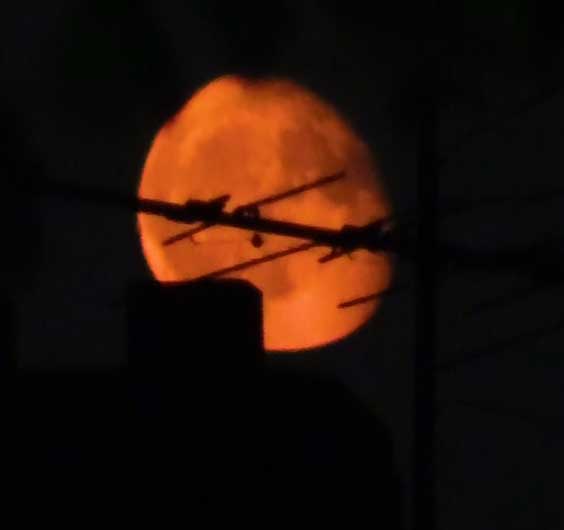
Photo by David Greene
AccuWeather meteorologists assessed as of Thursday, June 7, the unusual outbreak of wildfire smoke blanketing the Northeastern US from distant Canadian wildfires to be the worst smoke outbreak in the Northeastern United States in more than 20 years. AccuWeather Chief Meteorologist Jonathan Porter said “as bad as the smoke and air pollution was on Tuesday, the air quality can be even worse at times across parts of the Northeast on Wednesday, and poor air quality is expected to linger in some areas into the weekend.”
Porter said “people should frequently check the AccuWeather exclusive Plume Labs air quality maps at https://www.accuweather.
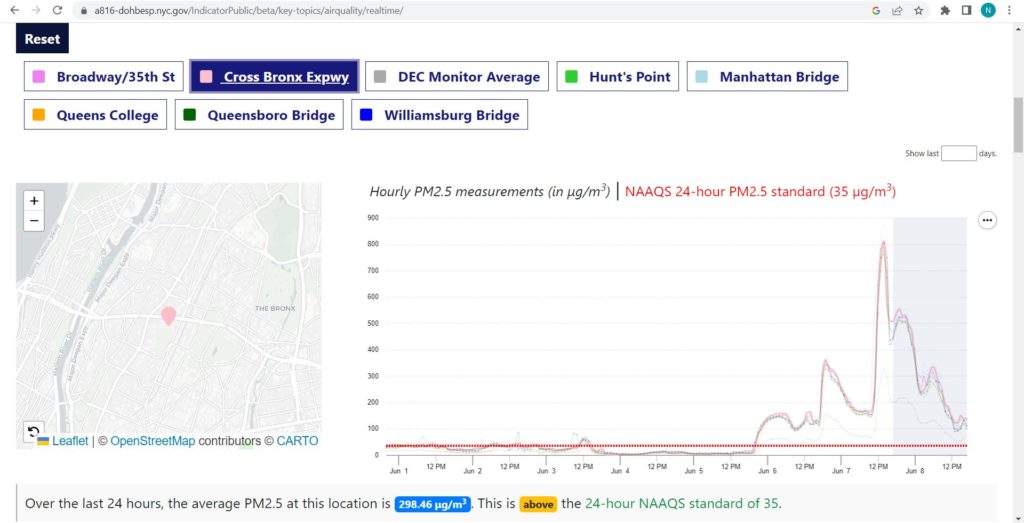
Source: City of New York Government Environment and Health Data Portal
On Wednesday, June 7, after school programs were canceled according to a citywide alert and many residents were seen wearing masks on the streets, and the NY Daily News reported that flights were being grounded at La Guardia airport due to poor visibility. The Adams administration also announced that alternate side parking regulations will be suspended on Thursday, June 8 and Friday, June 9, due to poor air quality. Payment at parking meters will remain in effect throughout the City.
Meanwhile, the NYC Department of Transportation (DOT) announced on Wednesday that a planned workshop to reimagine the Cross Bronx Expressway on Thursday, June 8, was postponed. “We will announce a new date soon and we invite the public and press to join us for any of the upcoming workshops,” the notice read. More information can be found here.




